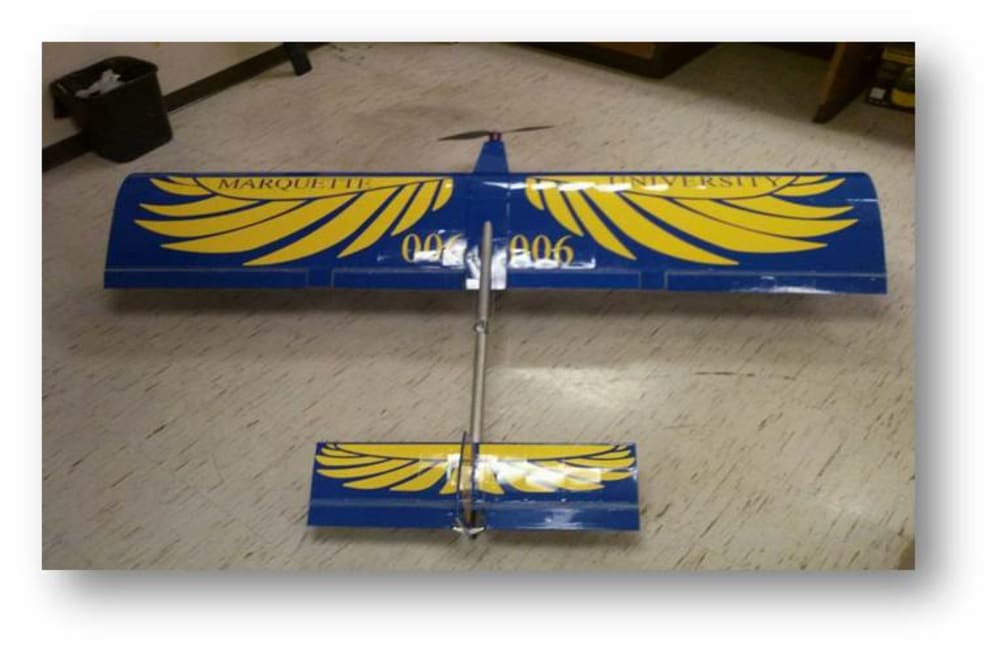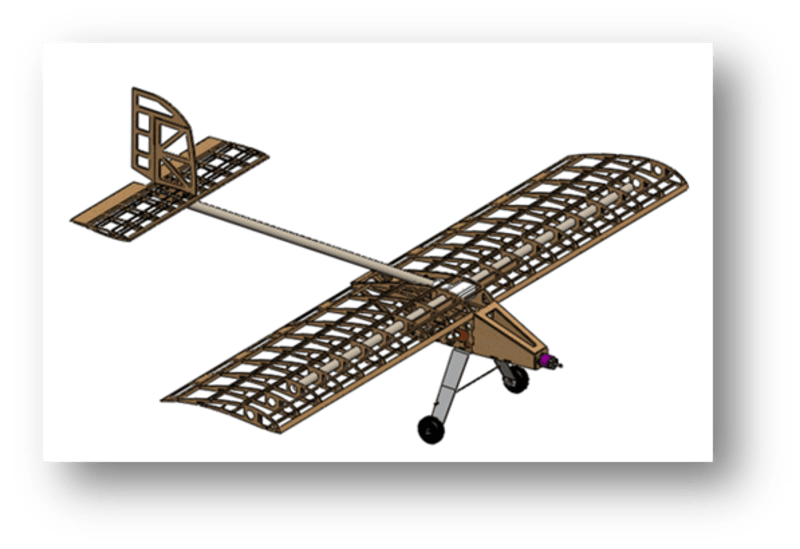Knowledge Is Power
In a world that is rapidly growing smaller, knowledge is the one thing man cannot get enough of. Presently unmanned drones and robots are a high priority in the majority of our industries. Two major issues arise, cost and adaptability. The cost to product an unmanned drone is high and due to the cost they are often limited to a single objective. A drone can be such a versatile tool, and if it were ubiquitously available the possibilities are endless; from farmers in third world countries unable to spread pesticides in their field effectively to terrain mapping and even package delivery could change overnight.
To combat this issue, a lightweight and affordable ($1500) r/c aircraft was designed. A heavy lift underpowered aircraft was manufactured with a total height, width, and length of 175 inches weighing 10.1 pounds. The aircraft is designed to carry a payload of 25-30 pounds of additional weight. This allows the possibilities of an additional servo, allowing payload discharge, or up to 25 pounds of electronics for sustained flight, collecting intelligence, or even an altimeter for terrain mapping. GPS navigation systems and cameras are exceptionally lightweight and would be clear of electronic interference from the motor control bay.
Design and Manufacturing
Some materials for the particular design such as a carbon fiber tail-dragger or a magnesium wing tube and tail boom may be difficult for the average person to afford. The components on this aircraft are adaptable and interchangeable making it simple to replace these materials with affordable ones. The aircraft is completely separable. Both of the wings, the tail, tail boom, and motor easily disassemble. This makes repairs or replacement of materials and components very simple. A common criticism of the aircraft is that is a somewhat conventional design. This is what makes it so unique, it is like this because it’s cheap and it is reliable. With low speeds and high payload the need for complex designs was eliminated.
The main factor about this aircraft is that every wooden part has been vector cut out using an Epilog laser engraver. With rapid prototyping and laser engraving becoming more relevant this is a fairly simple and cheap process that can be done by many companies and universities, quickly and economically. With a high lift design the aircraft is capable of taking off fully loaded in under 200 feet and land in much less because of the speed and weight eliminating the need for a heavy braking system. The aircraft can be adapted to have a more powerful receiver and inflight live feed camera system to be completely autonomous. This opens up the capabilities for numerous small business or home use.
Conclusion
The aircraft has been manufactured to utilized an underpowered motor and maximize the payload output of a small r/c aircraft. This lightweight affordable device eliminates the need for human risk and costly autonomous drones. The world is getting smaller every day and this aircraft can help us stay in touch with it.
Like this entry?
-
About the Entrant
- Name:Ed Barry
- Type of entry:teamTeam members:Edward Barry
Michael Bergagna
Beau Hommes
Samual Waldmann
Lukas Koshalek
Peter Malak
Michael Krzoska - Software used for this entry:NX8(F.E.A), Solidworks, Fluid Simulation
- Patent status:none





